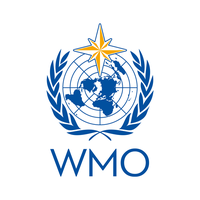Amid mounting concern about the health and environmental impacts of air pollution, a new report from the World Meteorological Organization points out the potential for low-cost sensor systems to assess levels of air pollution, identify sources and to support air quality strategies to reduce them.

GAW report n° 293 – cover image
Low-cost sensor systems (LCS) represent a key tool for filling gaps in existing global and local air quality monitoring networks and contributing information for policy-relevant air quality strategies.
In recent years, wide-scale deployments of LCS have been made in low- and middle-income countries, where they often provide air quality information in regions lacking the more traditional (and more expensive) reference grade monitors. In high-income countries, they supplement existing reference grade monitors with more localized near real-time air quality information – for instance, to monitor fire and smoke or vehicle emissions on busy roads.
“Air quality forecasting involving low-cost sensors is an increasingly important field due to its potential to support widespread monitoring and early warning systems, particularly in areas lacking more traditional monitors. Air quality forecasting is important to support effective decision-making to manage air quality impacts, especially in terms of human health. They are an important additional tool which can be harnessed at the community level to make a real difference in people’s lives,” said Sara Basart, WMO Scientific Officer and one of the report’s authors.
The report, Integrating Low-Cost Sensor Systems and Networks to Enhance Air Quality Applications, was produced by WMO’s Global Atmosphere Watch network in collaboration with the UN Environment Programme (UNEP), International Global Atmospheric Chemistry project (IGAC) and international experts on technical and application areas. It was released to coincide with the WMO Executive Council meeting, which has a focus on transforming science and practical services for society.
“Life begins and is sustained with breath, but too many around the world are suffering health problems and death due to breathing dirty air. Data-driven policy action towards combating air pollution is critical for efforts to improve global air quality – the more tools we have to support this, the greater our chances of recreating healthy environments for all life on earth,” said Richard Munang, Head of Global Environment Monitoring Systems and Early Warning for Environment Unit at UNEP.
“We had more than 30 contributors from many different countries. We were able to get a broad spectrum of different opinions and experiences worldwide and synthesise them into a report which really summarises the best practises for air quality applications from many different experiences around the world.” said Carl Malings, lead coordinating author of the report.
The effects of air pollution lead to an estimated 7 million deaths every year, according to WHO. Mounting evidence links ambient and household air pollution to various health outcomes like non-communicable diseases including respiratory, cardiovascular and pulmonary diseases, cancer, low birth weight, diabetes, cognitive impairment and mental health impacts.

Low-cost sensor systems (LCS)





